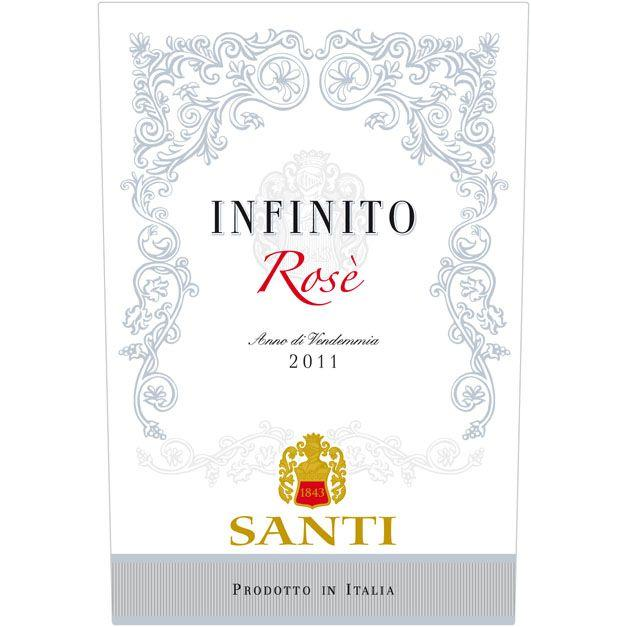Santi Bardolino Infinito Rose 750ml Santi Bardolino
$ 20,99 $ 12,59
Description
Pale pink in color with vivid red tints. Intense, elegant, fragrant bouquet of ripe grapes with delicate aromatic notes of ripe strawberries, wild cherries and blackcurrants. Balanced, very savory, fresh and fruity.
Producer Description
The Santi winery has played a key role in the history of Valpolicella since 1843, the year it was founded in Illasi, an old village at the eastern tip of the Verona district, near the Lessini Mountains.Here, in the shadow of a Mediaeval castle, in the valley known then as Longazeria, Carlo Santi founded his cellar to produce wines typical of the district.From the start, the Santi family focused on quality and prime raw materials, using only the best grapes from their own estate’s top growing area.The success of the wines persuaded the winery to procure more grapes from local growers, with whom a relationship of trust grew over time and today allows direct management of the vineyards.Cavaliere Attilio Gino Santi, an academic of vine and wine, took over from Carlo Santi and integrated pursuit of qualitative excellence in grape selection with research and innovation.Attilio was one of the very first in Italy to install modern sparkling wine production equipment in the 1930s. He invested in the development of a production method for sparkling wines that made him a point of reference at the time for Italian schools of oenology beginning to explore “quality fizz”.The third generation, represented by Guido Santi, consolidated the winery’s specialization in the direction of prestige products, phasing out entirely production of basic wines, and pursuing a farsighted quality watershed that the rest of the Italian wine industry imitated in subsequent decades.In 1974, the winery became part of Gruppo Italiano Vini, with upgrading of structures and facilities, confirming the winery’s quality commitment alongside its attachment to the growing area, and further concentrating production in Verona and Adige Valley local designations.Today Santi is proposing a range of wines entirely representative of the excellence of Valpolicella and the Tre Venezie, inspired by the commitment to promote its origins and the culture of the territory of reference.Oenologist Cristian Ridolfi’s in-depth knowledge of local wine traditions and the terroir in which Santi operates mean he has been able to lay down a distinct winemaking philosophy that has become a cultural identity.The cornerstones of Santi style are:Corvina: the lord of this terroir, whose presence in a blend ensures the wine has an elegantly fruity style;Large barrels: typical of ancient Italian tradition, these allows better oxygenation in the long ageing needed for wines to be cellared;Local wood: in addition to oak, Santi uses barrels made from typical native wood including cherry, chestnut and small amounts of acacia.To gain further insights into the behaviour of local wood, not much used in current winemaking, Santi has commissioned a scientific research project with the support of the University of Udine to study oxygenation processes in Corvina and its aromatic impact on local wood.The production of Amarone and consequently of Ripasso exploits traditional grape-drying techniques, starting with a manual harvest and subsequently leaving the berries on 6-7 kg racks in dry, well-ventilated rooms.The grapes remain in drying lofts for 3-4 months and are constantly monitored until they lose about half of their weight through evaporation of water, achieving concentration of desired sugars.During this phase a series of complex transformations take place in the grapes: increase of total acidity and decrease of malic acid until it almost disappears; modification of the glucose-fructose ratio; concentration of polyphenols; considerable increase in glycerine and the formation of many other substances, especially of an aromatic type.After grapes are dried, they are crushed and fermented.
Quick Shipping and Professional Packaging
We offer a broad range of shipping options thanks to our long-running partnerships with UPS, FedEx and DHL. Our warehouse staff are educated to pack your items exactly as per the specifications that we supply. Your items will undergo a thorough inspection and be securely secured prior to being shipped. We ship to thousands of customers each day from multiple countries. This is a sign of our determination to become the largest online retailer worldwide. Both Europe as well as the USA have distribution and warehouse centers.
Please note that orders with more than one item will be given a processing time according to the specific item.
Prior to shipping, our team will perform an exhaustive inspection of the items you purchased. Today, the majority orders will be shipped within 48 hours. The delivery time is estimated to be between three and seven days.
Returns
The stock is constantly changing and cannot be fully controlled by us due to the involvement of several different parties, such as the factory and our warehouse. The actual stock can change at any moment. Please be aware it's possible your order may become unfulfilled when you have placed the order.
Our policy is valid for a period of 30 days. If it's been more 30 days since you purchased your item and we're unable to offer you a full refund or exchange.
You are able to return an item when it's unopened and is in the same condition when you first received it. It must also be in the original packaging.


































